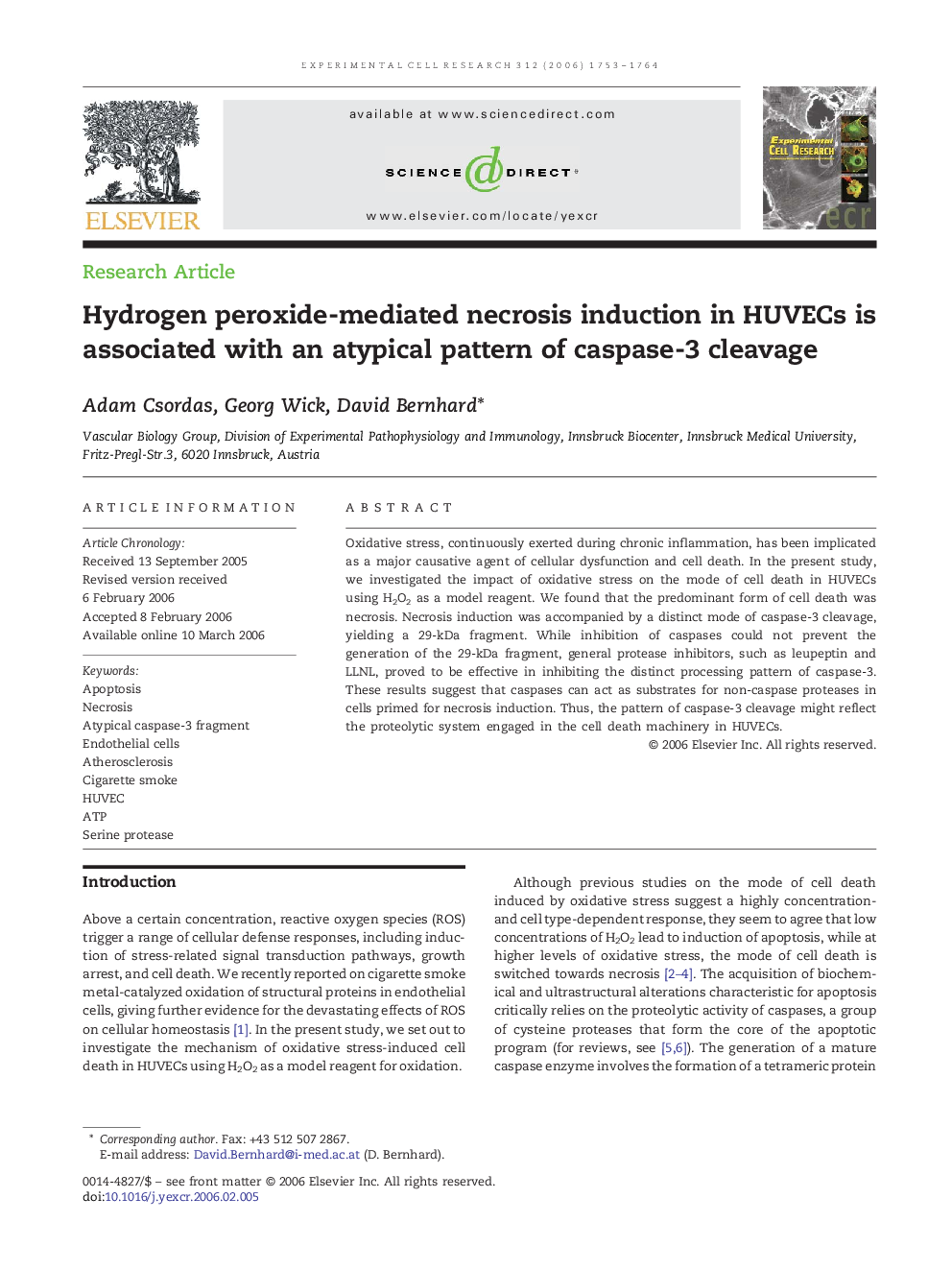| Article ID | Journal | Published Year | Pages | File Type |
|---|---|---|---|---|
| 2132139 | Experimental Cell Research | 2006 | 12 Pages |
Oxidative stress, continuously exerted during chronic inflammation, has been implicated as a major causative agent of cellular dysfunction and cell death. In the present study, we investigated the impact of oxidative stress on the mode of cell death in HUVECs using H2O2 as a model reagent. We found that the predominant form of cell death was necrosis. Necrosis induction was accompanied by a distinct mode of caspase-3 cleavage, yielding a 29-kDa fragment. While inhibition of caspases could not prevent the generation of the 29-kDa fragment, general protease inhibitors, such as leupeptin and LLNL, proved to be effective in inhibiting the distinct processing pattern of caspase-3. These results suggest that caspases can act as substrates for non-caspase proteases in cells primed for necrosis induction. Thus, the pattern of caspase-3 cleavage might reflect the proteolytic system engaged in the cell death machinery in HUVECs.
